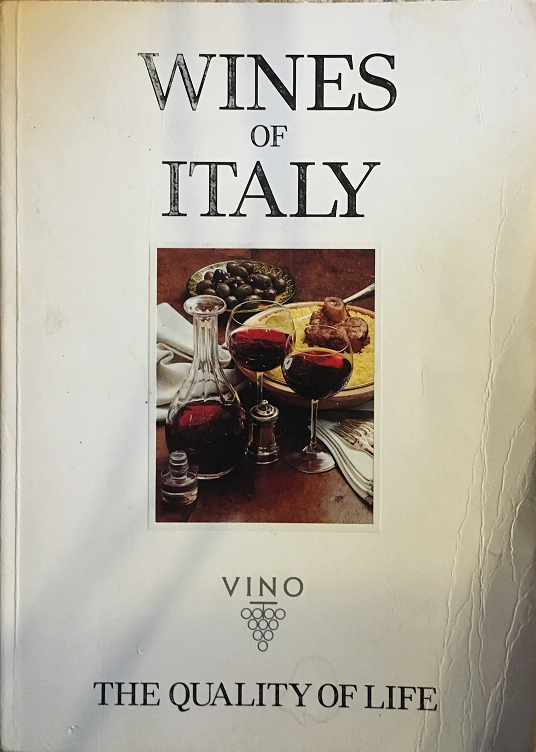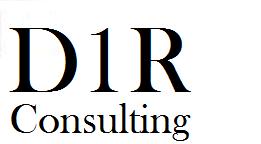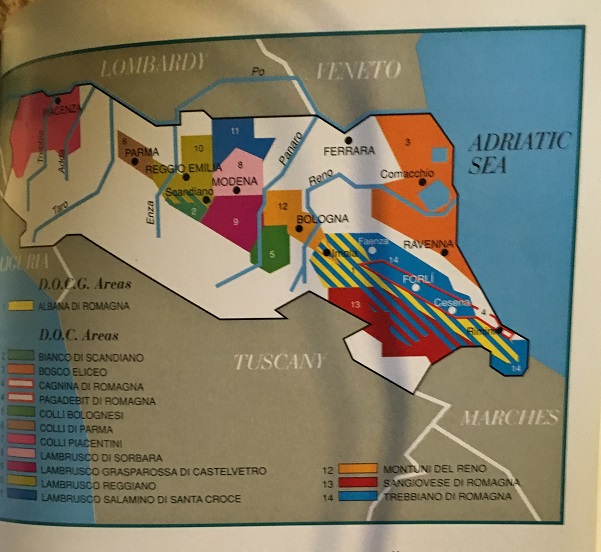Wines of Italy Book - Great Book on Italian Wines
- Details
- Published: Friday, 11 May 2018 14:59
- Written by David DeCiero

In 1995, I sent away to the Italian Trade Commission (back when you had to write to people) for their book, “Wines of Italy.” I had been interested in wine for some time and was looking to make sense of the myriad wines and regions of Italy. Since there was no real Internet back then, this was the only book I could find that was wholly dedicated to Italian Wine. I was not disappointed when I received it.
The book was published in 1994 by the Italian Trade Commission. It is broken down into a few different sections. It starts with some history of wines and winemaking in Italy. It also has a section on different wine related translations and how to read an Italian label. This is extremely helpful when standing in a store and trying to determine what some of the descriptions on the labels mean. Near the end, there is also a brief section on food and wine pairings with traditional Italian dishes.
The main part of the book is a breakdown of each state/region with the corresponding wines and a map of the location of the vineyards for each of the wines. This is only done for DOC and DOCG wines. (The book was published before the changes in laws about IGT). However, the section will mention other local wines of note. The best part is that it also gives a description of the wines along with the different styles in which they are made. As you can imagine, the Tuscany section is pretty large. It documents the locations of all 5 DOCGs and 21 DOC’s there. In all honesty, it is difficult to find most of the DOC’s in the United States unless you know a shop that specializes in Italian wine. I searched for years for any Vernaccia di San Gimagnano (a DOCG) and had very little luck. Now you can find them among the 500,000 different Pinot Grigios, but you have to look.
Piedmont is also chock full of good information, but I admit I turn to other books that spend more time on those regions, such as Windows on the World. They tend to highlight the major regions and give more information on the DOCG’s. So, I actually use this book for more unknown wines that are never covered in the larger books (most likely because so little is exported most people would never be able to find them). For example, I have never seen a major book that has covered Marche. This one does and you can read up on the 10 DOC’s there. Although, again, good luck finding them exported.
If you are taking a trip to Italy and staying away from the major regions, this is a good book to understand what to look for in each region. I am using it to plan a trip through Abruzzo currently. Although, in all honesty, this region is extremely simple with only two DOC’s, Montepulciano D’Abruzzo and Trebbiano D’Abruzzo. Of course, now we have many more resources available to us to plan trips, but this book can be used as a good starting point.
In all, this book was a godsend in 1995 when I was first learning about wine. Unfortunately, the book seems to have been out of print since 1994. I remember seeing an e-book that had been updated, but I was never able to find it on the Internet. The only thing a search comes up with now is some people selling them on eBay. I’m glad I still have my dog eared copy, it’s a fun little read when you are looking for maybe a new wine to try or just want to impress your friends with your knowledge of Ligurian wine!


